10 Japanese Games That Lost Their Anime and Manga Licenses in the West
Fist of the North Star? Dragon Ball Z? These 80s and 90s games looked very different by the time they appeared in the west...
Thanks to the internet and the growth of gaming as a general cultural phenomenon, audiences are now more familiar with the concept of localization: the process of altering a video game for a specific marketplace. Sometimes, these changes can be as subtle as altering lines of dialogue so they make sense in a given country – an everyday phrase in Japan would likely mean nothing to UK gamers if translated literally, for example – to fairly drastic changes to a game’s graphics.
One of the most famous examples is, perhaps, Bionic Commando on the Nintendo Entertainment System. In Japan, the game roughly translated to Hitler’s Resurrection: Top Secret, and contained a number of controversial references to the Third Reich. Nintendo, sensitive about such imagery in the west, had all this shorn from the American and European versions, where the game went under its now recognized name, and all instances of Hitler moustaches and Swastikas were carefully edited out. Oddly, a late cutscene involving a gory exploding head was left in, possibly because Nintendo thought most players would never even reach it.
Beyond avoiding sensitive topics like Nazism and religion (Nintendo also liked to edit out crucifixes and other such symbols from old games), there was something else that sometimes vanished on a game’s trip overseas: its licensing. Sometimes, this may have been because western audiences simply wouldn’t have recognized the anime or manga on which a game was based. Elsewhere, it was probably to avoid difficult rights issues.
Whatever the reason, there are a number of games from the ’80s, ’90s, and beyond that you may not have realized were once based on animation or comic book properties over in Japan. Games like these…
Ninja Kid – NES
Was originally: GeGeGe no Kitaro
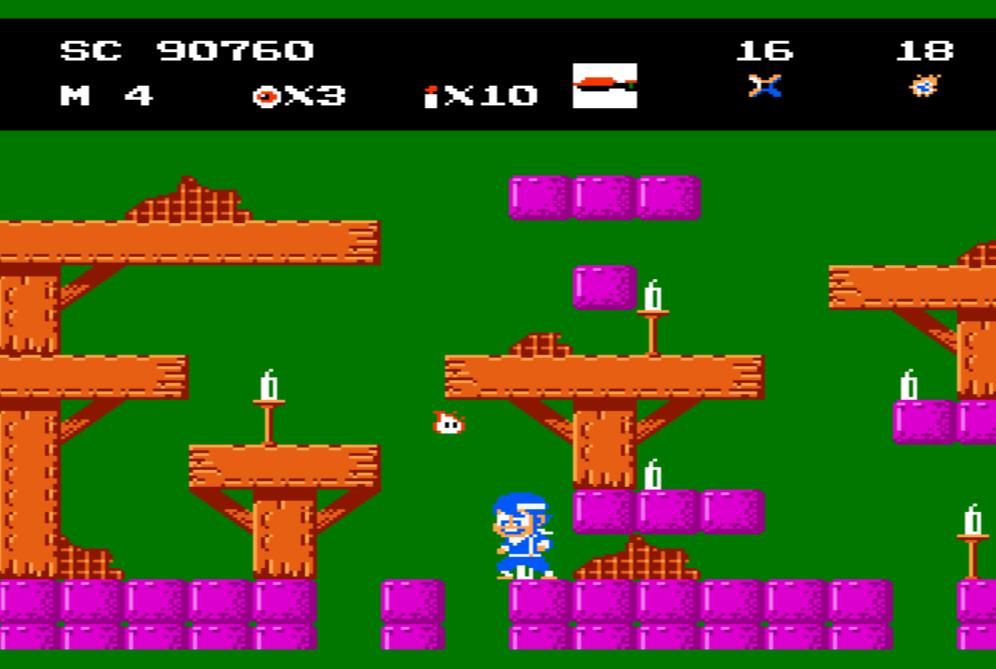
It wasn’t an indelible classic like Super Mario Bros, but this fun, jaunty platformer had lots going for it, especially given that it came out in 1986 – back when the NES was in its relative infancy in the US. In its western guise, it offered a curious trip through what looked like a medieval world of ghosts and demons, with the player controlling a somewhat anonymous youth clad in blue. What most American kids wouldn’t have realized, though, is that Ninja Kid began as GeGeGe no Kitaro, an adaptation of a long-running manga and anime series that had its roots in the 1960s.
As introduced in Shigeru Mizuki’s manga, the lead character is Kitaro, a weird kid with one eye, the missing one covered up by his long hair. In both the manga and the game, his job was to see off the various yokai – or supernatural monsters – invading Japan from all corners of the globe, and his weapons in the game were a flick of his long hair, a disembodied finger, or a wooden clog.
In short, GeGeGe no Kitaro was like Yokai Watch decades before that became a hit, and this NES spin-off might (just might) have been the game to introduce the character to a western audience. Ultimately, Kitaro was carefully erased, along with other references to the original property.
Black Belt and The Last Battle – Sega Master System, Mega Drive
Was originally: Fist of the North Star
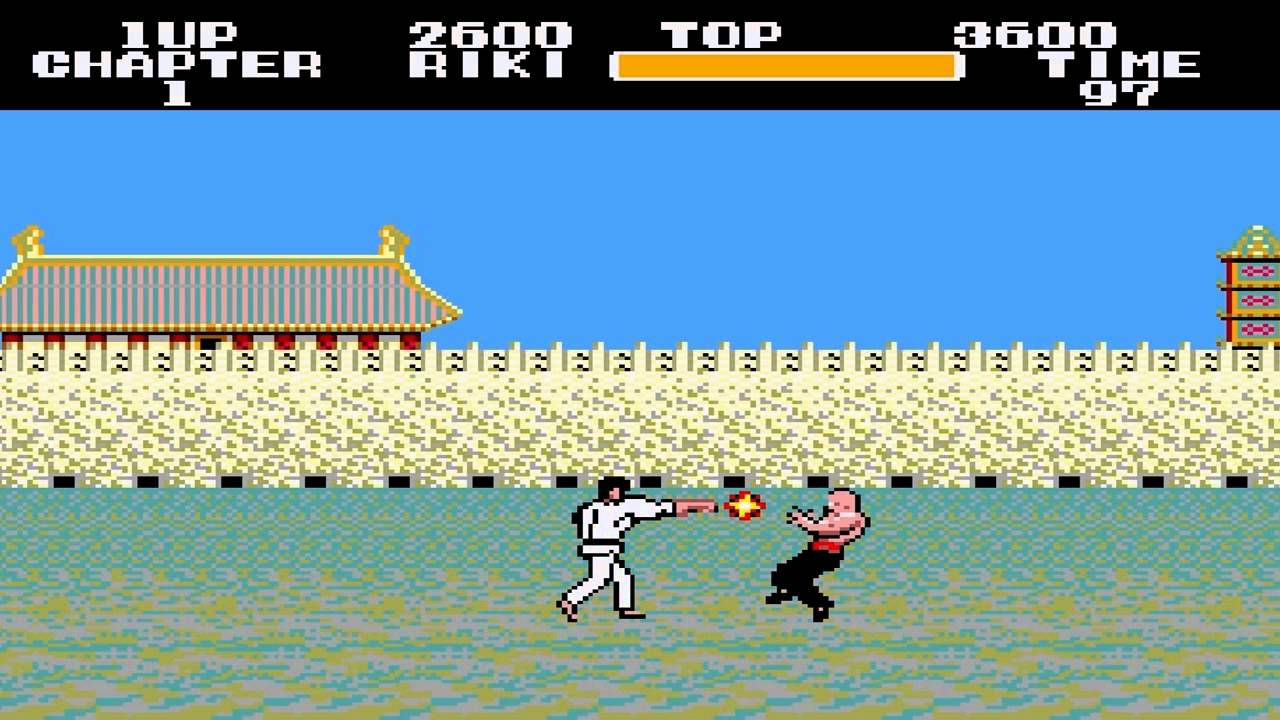
When Akira kicked off a keen interest in manga and anime, particularly in the US and UK, Fist of the North Star was among a handful of features and OVAs put out by Manga Entertainment. The 1986 film’s ferocious violence caused a brief ripple of controversy among British tabloids when they discovered that – shock, horror – some Japanese animation contained a fair bit of death and nudity on occasion. The gorehounds who happily lapped up Fist of the North Star back in the 1990s may not have realized, however, that the west got a brush with the ultra-violent adventures of Kenshiro a good few years earlier.
Black Belt, a side-scrolling brawler for the Sega Master System, originally began life as a licensed game based on the Fist of the North Star (or Hokuto no Ken) property, with the player kicking and punching his way through an assortment of ill-fated goons across a postapocalyptic background. For its trip overseas, all the crumbling skyscrapers and parched deserts were replaced by dojos and eastern temples, while the bad guys became generic figures in martial arts outfits. Oddly, Sega didn’t clean the game up entirely for its western release – when Kenshiro punches a bad guy, their bodies still explode in (bloodless) chunks of meat.
A similar thing happened a few years later, when another Hokuto no Ken game for the Sega Mega Drive was cleansed of its licensed elements and released elsewhere as Last Battle. This time, the postapocalyptic theme remained intact, though Sega was careful to remove all the squelchy exploding heads. A shame, really, because the blood and guts did much to disguise the original game’s repetition.Decapattack – Sega Mega Drive
Was originally: Magical Flying Hat Turbo Adventure
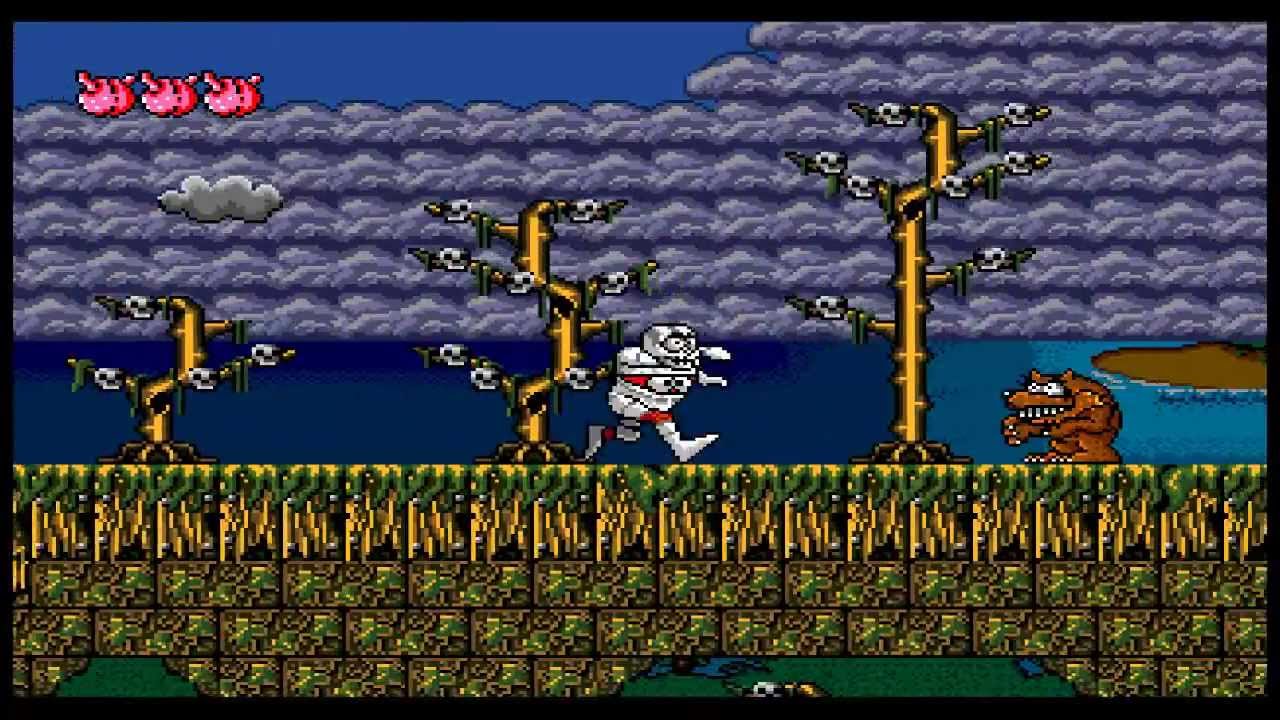
Now this is a really odd one. In the ’80s, developer Vic Tokai made a small industry out of releasing a markedly similar game with different graphics. On the NES, there was Kid Kool, which in Japan was a licensed game based on a popular child actor. On the Master System, there was Psycho Fox, which was almost identical save for the new backgrounds and a shape-shifting fox hero.
Finally, there was Magical Hat, a seemingly short-lived anime released by Studio Pierrot some time in the 1980s. It’s difficult to find many details about Magical Hat online, but we do know that it was lively and colorful, and prompted Vic Tokai to make Magical Flying Hat Turbo Adventure, which was basically Psycho Fox with graphics redesigned to fit the anime license.
This, arguably, was the best of the lot, and a fun early platformer for Sega’s then-new 16-bit console. For its western release, though, Magical Flying Hat was altered beyond recognition to Decapattack, a cartoon-horror-themed platformer which traded the original’s blue skies and cute enemies with monsters and bouncing skulls. Instead of a plucky youth wearing a turban and a cape, the central character became Chuck D. Head, a mutant Egyptian mummy who throws his own decapitated cranium at enemies. Both versions are, in their own way, delightfully weird.Chubby Cherub – NES
Was originally: Obake no Q-Taro
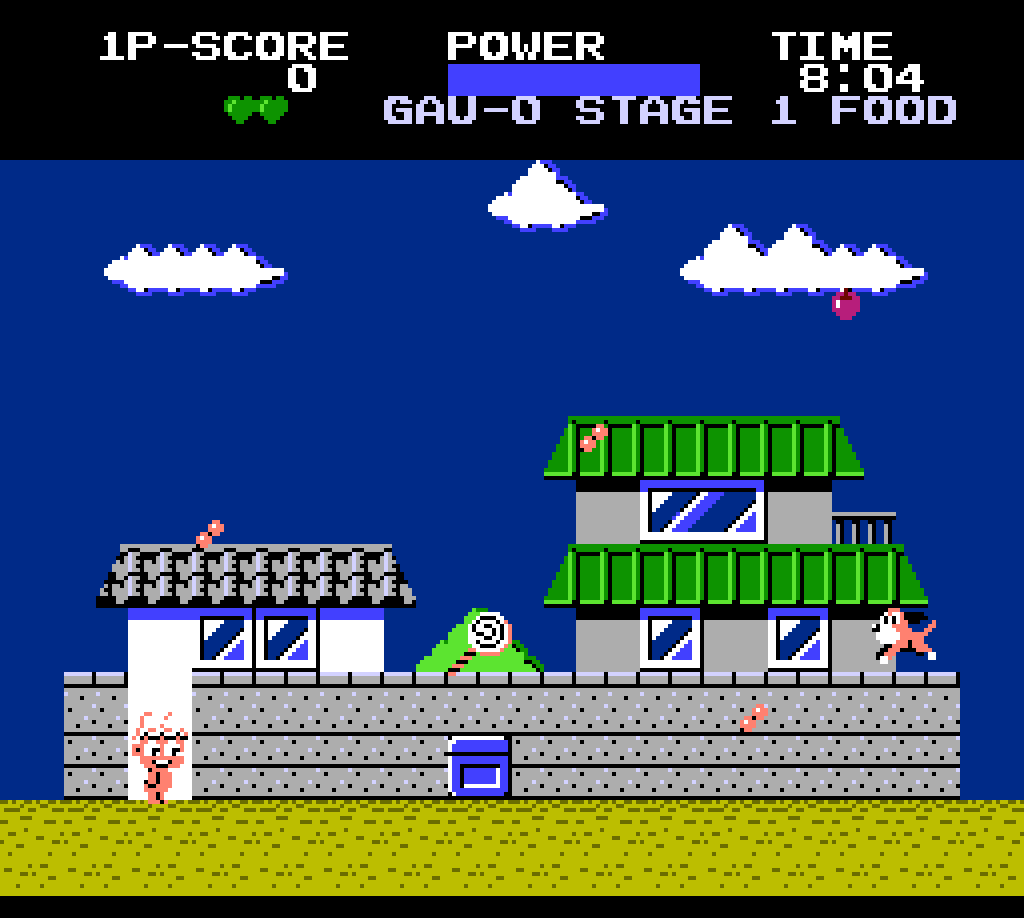
Another fairly early release for the NES, this side-scrolling platformer was a decent if unremarkable platformer, with the central character being a hovering angel who looks a bit like an off-brand Kid Icarus. Its major innovation (if you can call it that) is that it gives the player a modicum of freedom to fly around, making it something of a shooter-platformer hybrid.
As you may have gathered by now, the original Japanese release didn’t have much to do with chubby cherubs at all. Instead, the hero was Q-taro, the friendly ghost out of a hit manga and anime called Obake no Q-taro. The manga was by Fujiko F. Fujio, the duo who most famously gave the world robot cat character Doraemon. Q-taro is similarly cute and gentle. Although he’s a ghost, he has a crippling phobia of dogs, which is why the spin-off game, released by Bandai in 1985, contains a curious number of rampaging canines – and a subtitle, Wan Wan Panic (“Wan Wan” being the Japanese equivalent of “Woof woof” in English).
Indeed, what’s interesting about Chubby Cherub is that, aside from changing the friendly ghost to a little angel, the rest of the game remains largely unchanged – and that includes all the references that western kids likely wouldn’t have understood. Collectible items still include onigiri (Japanese rice balls), and the backgrounds are unmistakably Japanese suburbs, complete with blue roof tiles.
All this, together with some amusing Japanese-to-English translation, suggests that Chubby Cherub was localized in a bit of a hurry – all par for the course in an evidently low-budget, quickly-produced game. All the same, there’s something rather adorable about Chubby Cherub; maybe it’s all those puppies bounding around the place that make us go all soppy.Street Combat – SNES
Was originally: Ranma 1/2: Neighborhood Combat
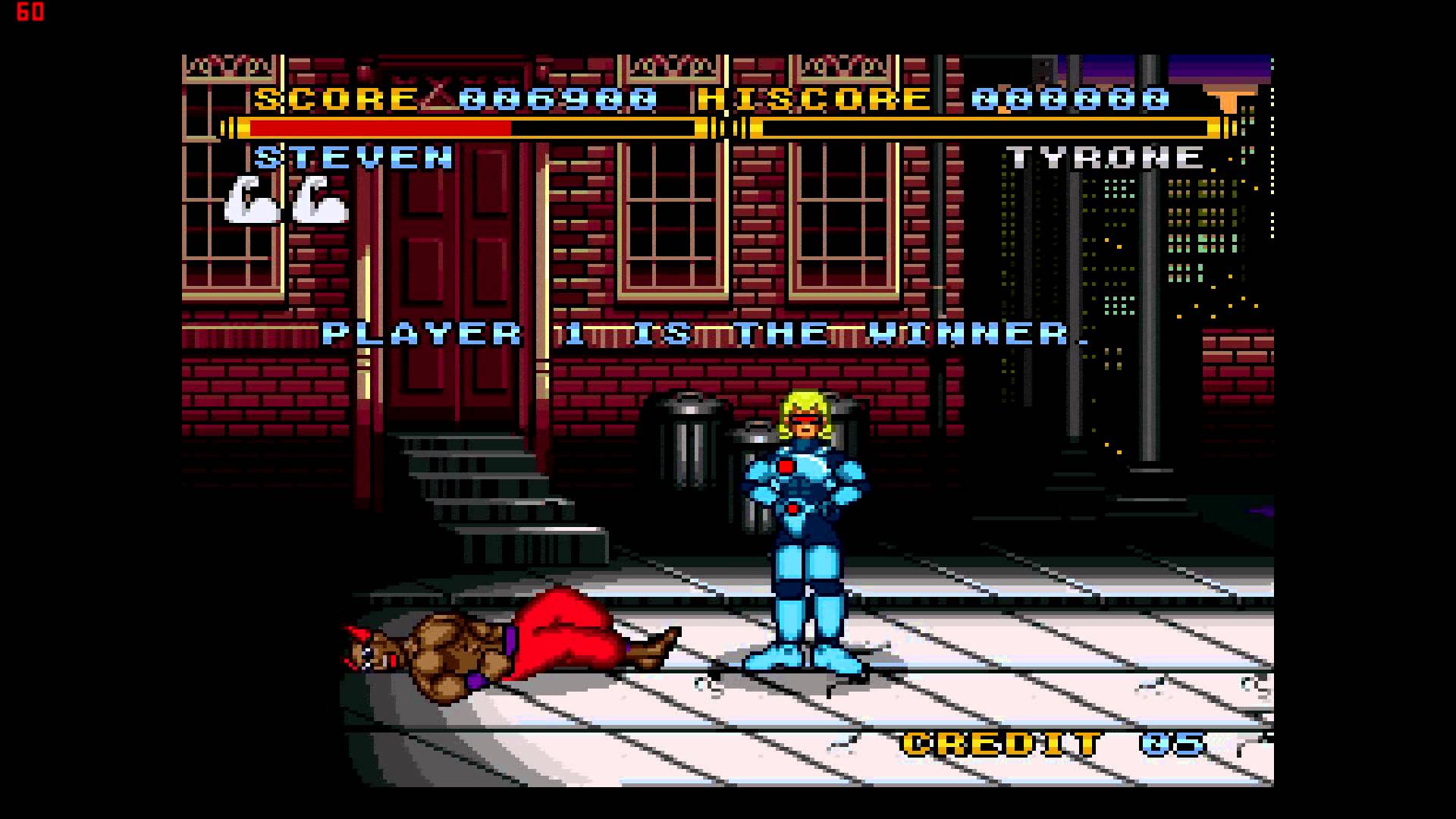
Given the Street Fighter II mania sweeping the planet in the early 90s, this rather anonymous-looking brawler didn’t stand much of a chance, though it’s possible that a small yet devoted group of anime fans would’ve bought a copy had it been released under its original guise. In Japan, Ranma 1/2: Neighborhood Combat was one of several action games based on Rumiko Takahashi’s popular manga series, which became a hit anime in the 80s. Ranma was marked out by its immediately-recognizable art style, irreverent humor, and bold characters, which were all somewhat in evidence in Neighborhood Combat.
Okay, so it was no Street Fighter II, but the anime-inspired graphics at least helped prevent it from looking like a straight clone. The same really can’t be said for the SNES version, where the quirky character designs were replaced by dull muscle-bound guys in jeans and t-shirts. Neighborhood Combat wasn’t great, but at least it let us fight a giant, belligerent panda.
Fortunately, the next game in the series, Ranma 1/2: Hard Battle, made it to the west with its license instead. Tellingly, the belligerent panda (actually Genma Saotome in his ursine guise) appeared on the cover.Dragon Power – NES
Was originally: Dragon Ball: Shenlong no Nazo
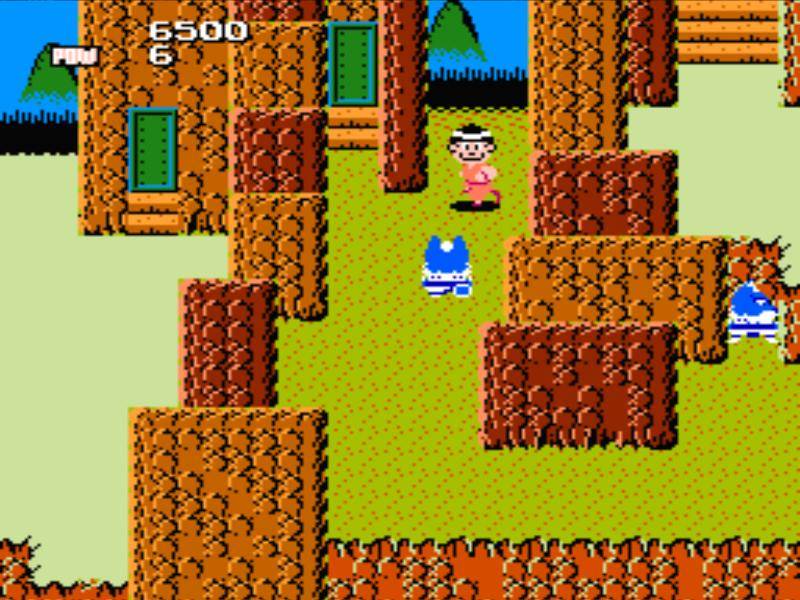
In time, Dragon Ball Z would become known the world over thanks to its regular play on cable television and accompanying translations of Akira Toriyama’s action-packed manga. When Dragon Power came out for the NES, though, Dragon Ball was still something of an unknown quantity in America, and in any case its publisher, Bandai (which also brought us Chubby Cherub and Ninja Kid) clearly couldn’t be bothered to pay for the license to use the Dragon Ball name in the west. As a result, we got Dragon Power, a game changed just enough to avoid incurring the wrath of the rights holders, but with relatively minimum effort from those in charge of the localization.
The manga’s shock-haired hero Goku is now a smiling, large-eared chap in a pink martial arts outfit. Secondary characters have been given a minor overhaul, too, but little effort’s gone into editing out some of the original game’s saucier aspects. One scene involves a lecherous old man, Master Roshi in Dragon Ball, asking to see a female character’s underwear in exchange for putting out a fire. We’re then treated to a cutscene where the old geezer’s surrounded by a circle of white knickers.
How did Bandai work around this problematic sequence? By altering the dialogue so that the old man wants sandwiches rather than knickers, the idea being that the circle of white triangles could also look like halves of sliced bread. (This, coupled with some really iffy translated dialogue for several moments of unintended comedy.)
Not that Dragon Power was much of a classic in either guise – with its top-down perspective and free-roaming map, it’s like The Legend of Zelda without any of the polish or refinement. Anyway, who wants a sandwich?
Cratermaze – PC Engine/TurboGrafx-16
Was originally: Doraemon: Deikyu Daisakusen
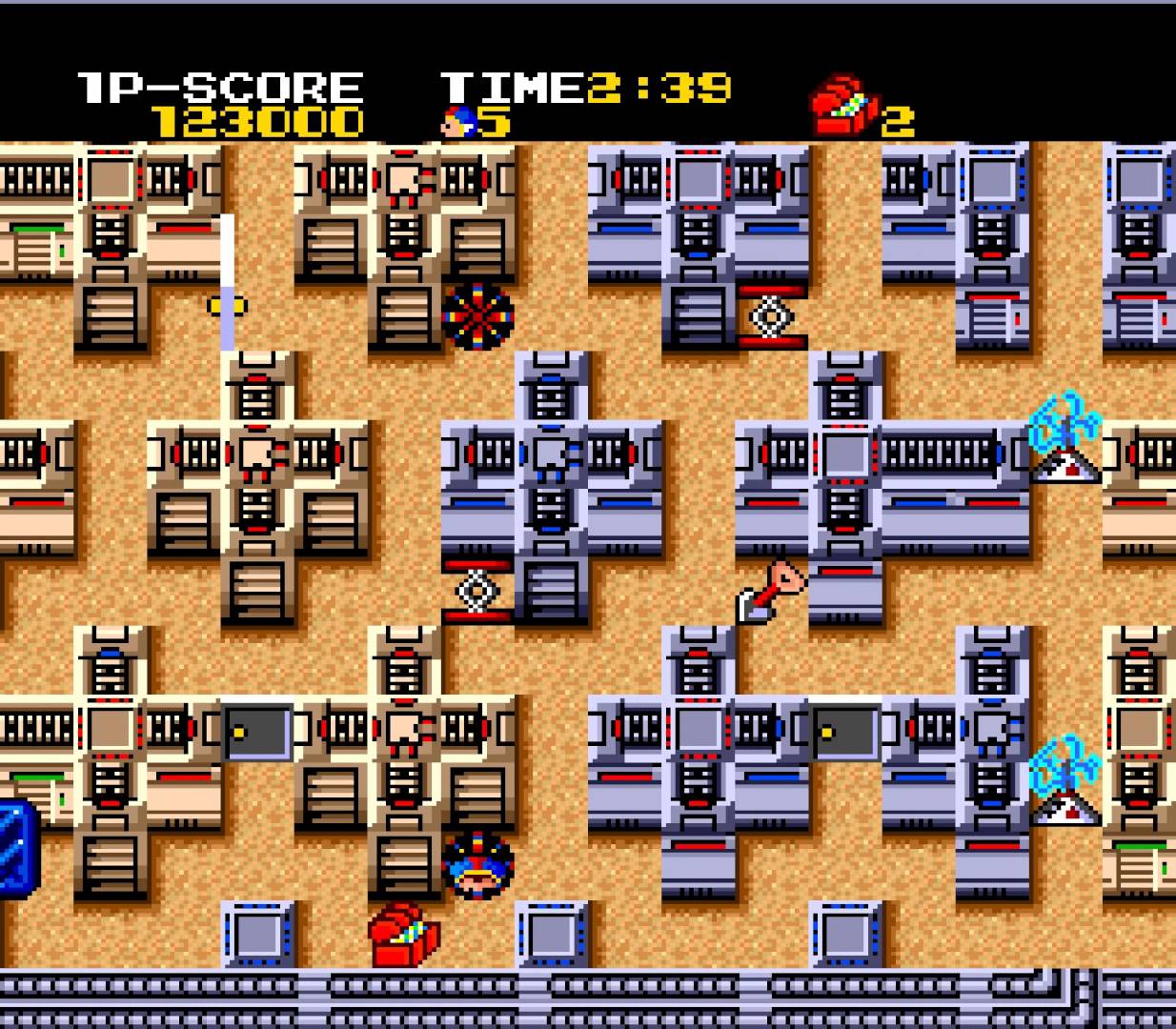
An earless robot cat from the future, Doraemon’s smiling face has graced a vast number of licensed games since the 1980s, and Doraemon: Deikyu Daisakusen was one of the most charming. It’s a twist on Hudson’s own Bomberman premise in that it’s a maze game where you collect things and blow stuff up. In this case, the aim is to collect all the doriyakis – those are Japanese pancakes with assorted fillings, and Doraemon’s favorite snack – and dig holes in which to capture enemies. It’s the same mechanic as Space Panic, in essence, but with Bomberman‘s top-down perspective and some surpisingly complex, maze-like area designs that provide a real puzzler-like challenge later in the game.
On its trip to the US, where the PC Engine became the TurboGrafx-16, Doraemon vanished, with the central character replaced by a chubby guy in a blue space suit and the pancakes switched to treasure chests. Like Chubby Cherub, though, the rest of the changes are quite minimal, with several Japanese-specific designs left intact. In the opening cutscene, a villainous creature takes the form of a jomon statue from ancient Japan; temples and houses still look distinctly eastern. On the plus side, this means that Cratermaze lost Doraemon, but little of the original game’s breezy charm.
UN Squadron – Arcade, SNES, various
Was originally: Area 88
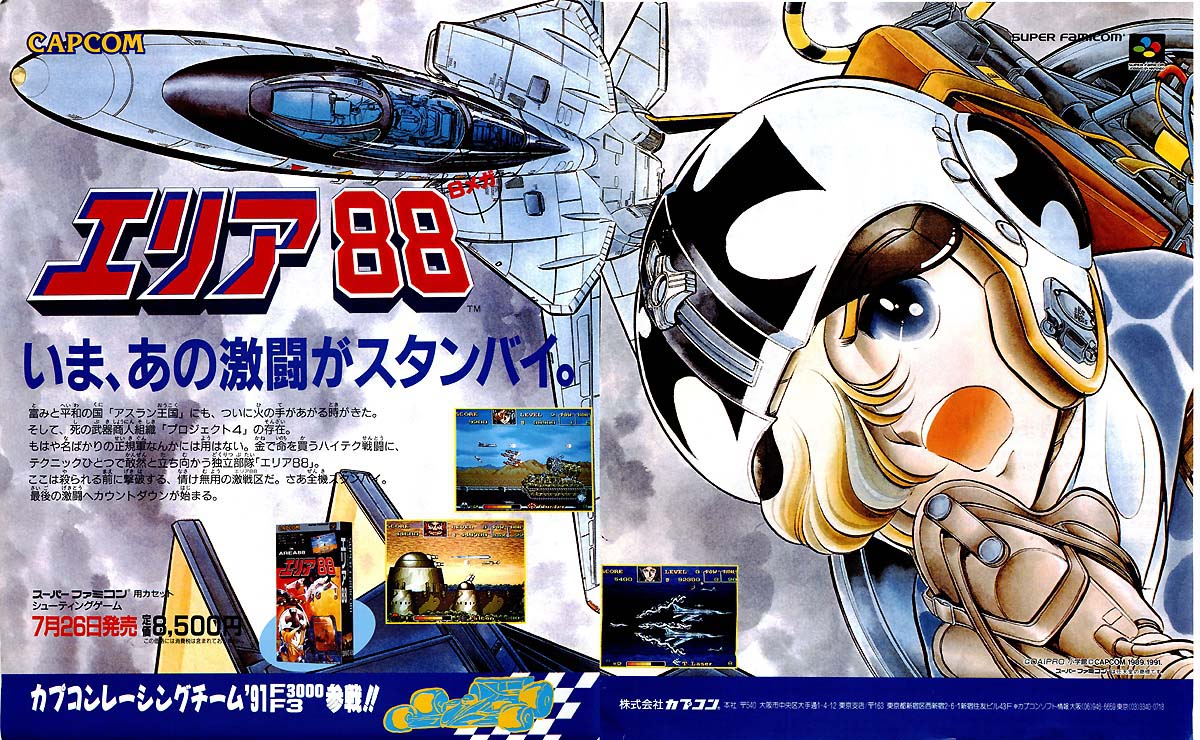
In reality, almost nothing was changed in this very difficult side-scrolling shooter from Capcom other than the name. Everything else from the source manga and anime remains the same. In Japan, Area 88 was a long-running saga about mercenary pilots fighting a war in the Middle East, their heads turned by the prospect of huge pay checks while their souls are eroded by years of death and destruction. Capcom’s shooter inevitably lost the “war is hell” sentiment in translation, but the arcade game and subsequent home computer and console ports provided plenty of aerial thrills and explosions.
Again, Area 88 was largely unknown in the west, so the name was changed to UN Squadron. The gaunt, distinctive character designs remain the same, though it’s a pity that UN Squadron’s western marketers opted to remove all evidence of Kaoru Shintani’s artwork from the box art and advertising. For the full Shintani experience, we’d recommend getting hold of the original Japanese Area 88 cartridge (boxed, of course) from Japan. It’s a thing of beauty.
Tecmo Cup Soccer Game – NES
Was originally: Captain Tsubasa
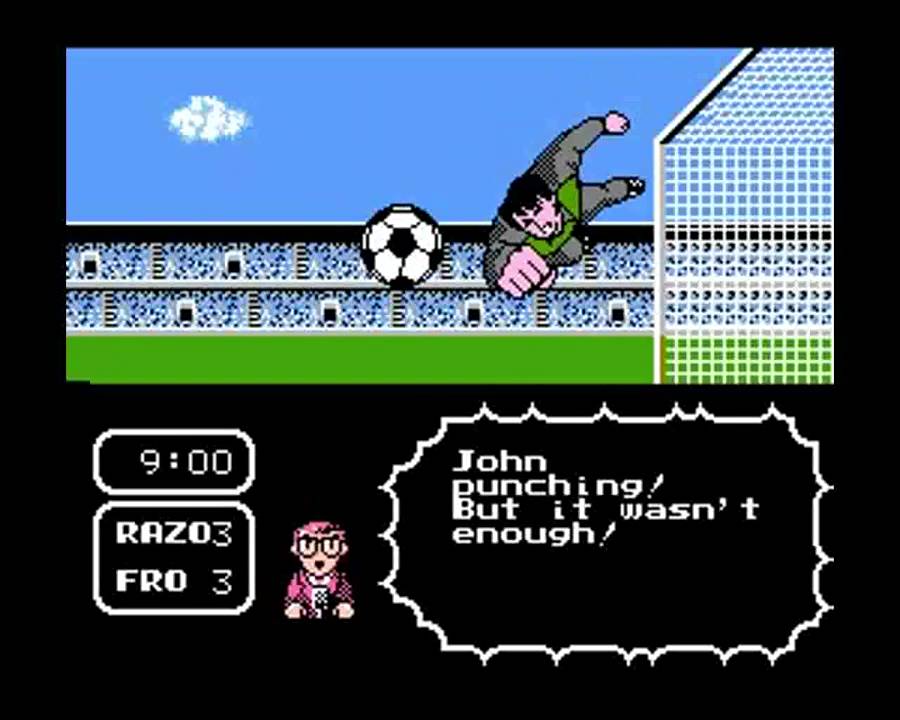
Long before FIFA’s reign, numerous companies attempted to capture the dizzying thrill of football. One of the more unusual angles on the sport was Tecmo Cup Soccer Game, a kind of football RPG where actions were chosen from a menu. Once selected, your choices would then be played out in real-time by the little players on the pitch. The game’s largely forgotten these days, partly because it was roundly eclipsed by the almost identically titled series of Tecmo World Cup football games that appeared in arcades and on Sega Mega Drive and NES.
Still, the Tecmo Cup Soccer Game at least offered a more cerebral alternative to the arcade version’s frantic button-mashing, and offered a further secret hidden from western players: it was originally a licensed game based on a series called Captain Tsubasa. In Japan, where it’s possible to find manga and anime based on just about anything, Captain Tsubasa reached the peak of its initial popularity in the mid-80s, when its comics were flying off the shelves and the TV show was pulling in sizeable audiences.
Inevitably, Tecmo Cup Soccer Game got rid of the happy football-kicking protagonist and the show’s theme tune, and lost a bit of the original’s personality in the process. In place of the titular Captain, the western release’s protagonist is just Some Blonde Dude. Captain Tsubasa’s still going strong in Japan, though, and spin-off games are still being produced to this day.
Cyber Spin – SNES
Was originally: New Century CBX Cyber Formula
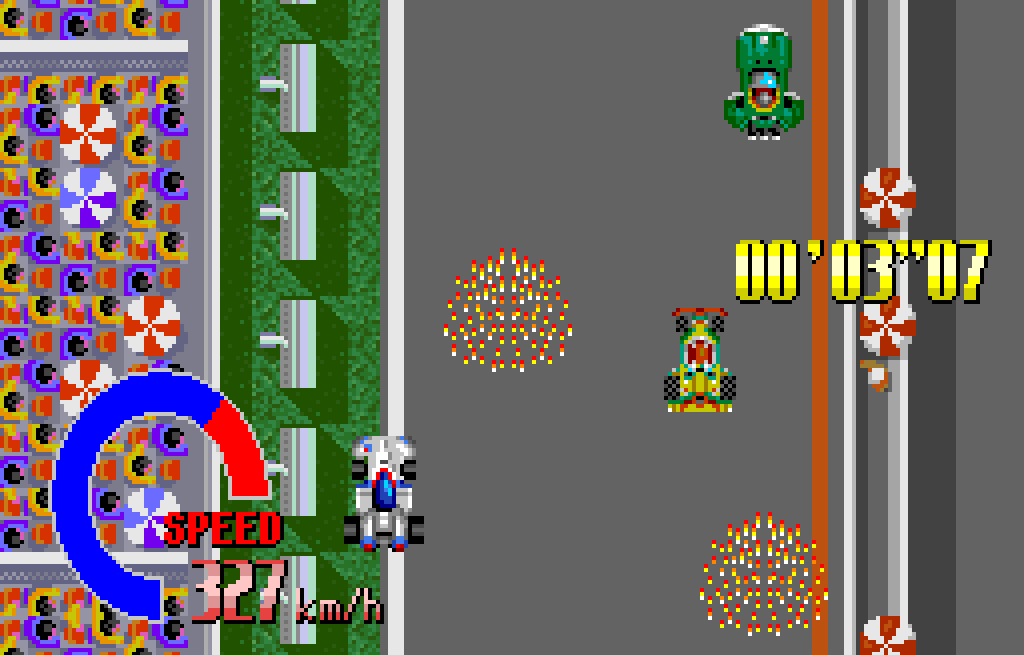
Quite a few great racing games appeared on the SNES, largely because its fancy Mode-7 graphics allowed for super-fast, pseudo-3D sprite scaling. Strange, then, that Cyber Spin emerged as a top-down arcade racer. Strange, but not necessarily bad – on a console infamous for its slow-down (just take a look at Gradius III, for example), Cyber Spin offered a ludicrously fast, simple driving experience akin to the classic Super Sprint.
Again, Cyber Spin began life as a licensed game: it was based on an anime called New Century CBX Cyber Formula about a futuristic grand prix where drivers sit at the helm of advanced, computer-assisted cars. The series was full of intrigue, bitter rivalries, and shock deaths, all of which fell by the wayside for the western release game. Cyber Spin lacks the Japanese version’s characters and cutscenes. Thankfully, the curvaceous 90s-futuristic vehicles remain exactly the same.
The TV anime only lasted for a relatively brief 37 episodes in Japan, but the series was kept alive for years, thanks to straight-to-video installments and regular video game sequels on the PS2 and PSP. Unlike Cyber Spin, all of these appear to have remained Japan-exclusives.
This is something we’re seeing more commonly in today’s much larger, more competitive video game market: rather than spending the money manipulating a game for a western audience, publishers are increasingly putting the title out as-is and hoping for the best (as in something like Yokai Watch, for instance) or simply leaving it as a purely local experience, known only to its Japanese purchasers or those who discover it on the web.
The days of panties being recast as sandwiches are, it seems, gone for good.